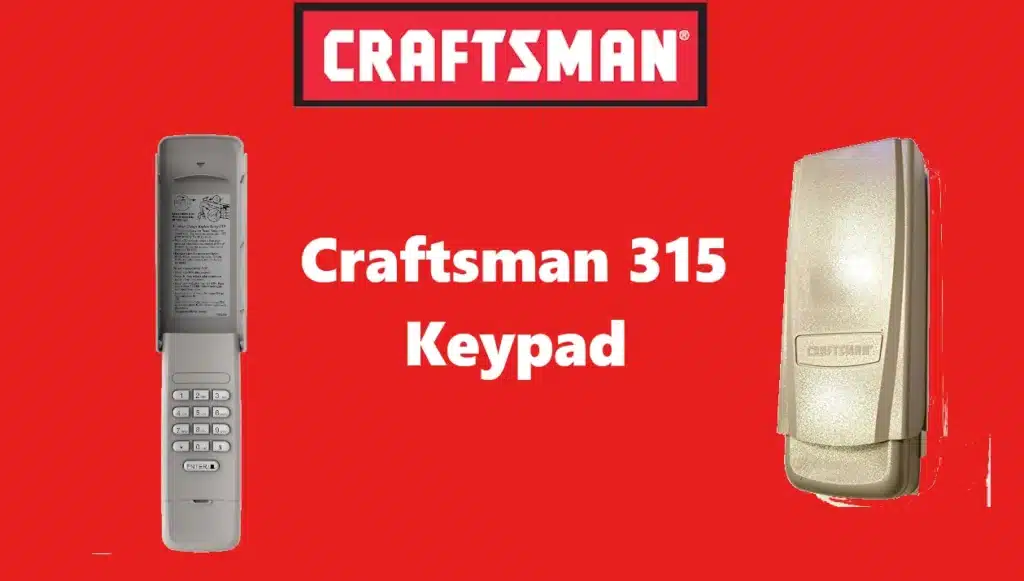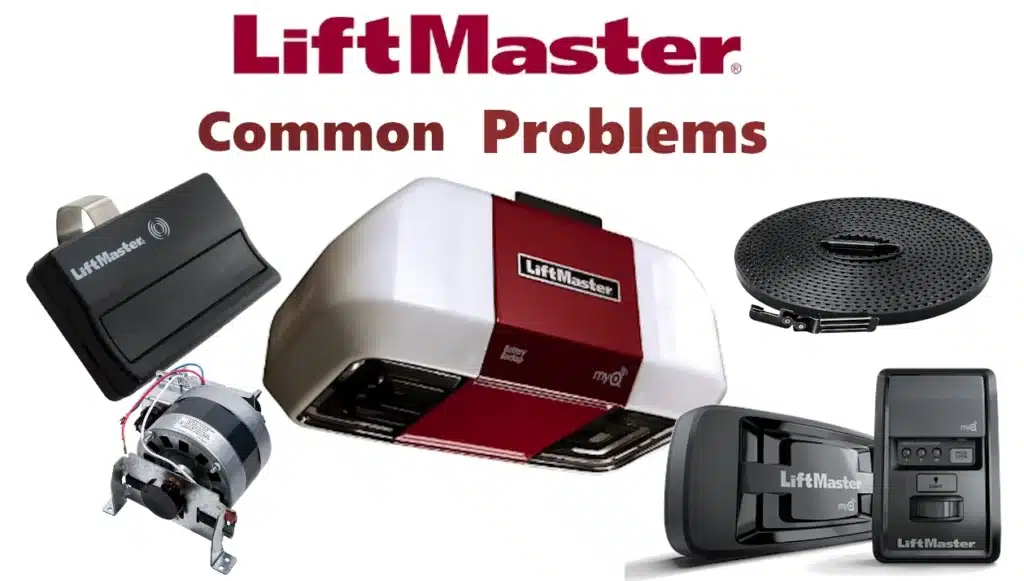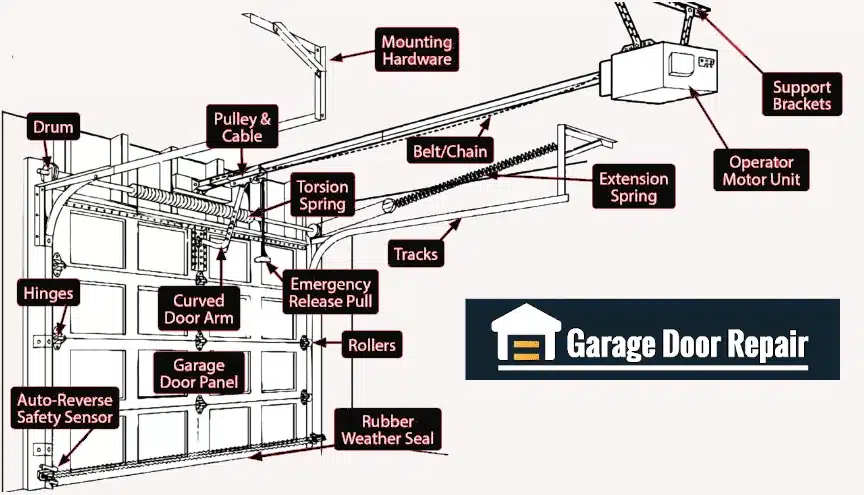The Craftsman 315 MHz series refers to a line of Sears/Craftsman residential garage door openers (often ½ HP chain/belt drive) using Security+ rolling‑code technology on 315 MHz. These openers (made by Chamberlain/Stanley) come with wireless keypads (e.g. Craftsman model 139.53754) that use 4‑digit PINs (supporting up to 24 permanent and 24 temporary codes). The opener’s receiver is factory‑coded to match its remotes and one keypad. It can support up to eight 315 MHz remote controls plus one wireless keypad. Importantly, the wall‑mounted control panel is hard‑wired and operates independently of the wireless keypad, so a keypad failure will not affect the wired wall console. Craftsman 315 systems use purple “Smart Button” Security+ coding – only remotes/keypads rated for 315 MHz Security+ will work. (390 MHz Intellicode devices or fixed-code units are incompatible.)
Common Causes of Craftsman 315 Keypad Failure
- Dead/weak battery: The keypad uses a 9 V battery (some very early models use 12 V). A depleted battery is the most frequent cause of a non‑responsive keypad. When battery power is low, the keypad won’t transmit. After replacing the battery, the keypad must be reprogrammed to the opener (see Reprogramming steps below).
- Erased opener memory (lost sync): If the opener’s memory was cleared or reset – for example by holding the motor unit’s Learn button for ~6 seconds – all remote/keypad codes are erased. In that case the old keypad code no longer exists on the opener and the keypad will seem dead. (This can happen inadvertently when attempting to add a remote.) After a memory-clear, you must reprogram each remote and keypad to restore operation.
- Temporary PIN expired: If a keypad was using a temporary (visitor) PIN, it will stop working once its time/count expires. After expiration the opener ignores that PIN; you must clear memory and reprogram the keypad with a new code.
- Button or circuit fault: A damaged button on the keypad can block a PIN (for example, if the “3” digit won’t register, a PIN containing 3 won’t work). To check, program a different 4‑digit PIN with all good buttons. If that works, one of the old PIN’s digits is bad. In this case either use a new PIN or replace the keypad.
- Mounting interference: The keypad transmits wireless signals to the opener. If it’s mounted on metal or concrete, the signal can be blocked. If the keypad only works away from the wall, this is likely. Try loosening it from the surface or adding rubber spacers between the keypad and wall. Testing the keypad off‑wall can confirm this.
- Wrong frequency/protocol: Craftsman 315 openers use 315 MHz Security+ (purple smart button). A 390 MHz Intellicode keypad or a fixed‑code (DIP‑switch) keypad will never program to a 315 MHz Security+ opener. Always use a keypad specified for 315 MHz Security+ (e.g. Craftsman 139.53754). (Universal keypads for 315/390 MHz exist, but be sure they support Security+ rolling code.)
- “Lock” feature on wall control: If the wall console’s lock switch is on, it disables remotes but does not disable the keypad. In other words, a locked wall panel will still allow keypad operation, so lock is not a cause of keypad-only failures.
Step-by-Step Fixes and Reprogramming Craftsman 315 Keypad
Battery Replacement: First, replace the keypad’s battery. Use a fresh 9 V (or 12 V for very old models) – 9 V is typical. Check that the keypad’s light comes on when a button is pressed. If battery power had died, always reprogram the keypad after installing a new battery, since power loss can erase its link.
Clear Opener Memory (if needed): If you suspect the opener memory was erased (or to be safe), clear it deliberately by pressing and holding the garage unit’s Learn button until the indicator LED goes out (about 6 seconds). This erases all previous remote and keypad codes. (Any time you do this, be prepared to re-learn every remote/keypad.)
Program the Keypad: Follow the Craftsman 315 manual instructions to reprogram the keypad:
- Activate Learn Mode on Opener: Press and release the Learn (or Smart) button on the motor unit. The learn LED will glow steadily for about 30 seconds.
- Enter PIN on Keypad: Within 30 seconds, enter a new 4-digit PIN of your choice on the keypad. Then press and hold the
ENTERkey. Release it when the motor unit’s lights blink (or you hear two clicks). The blinking lights confirm the opener has learned the keypad code. - Test the PIN: Close the cover and wait 30 seconds. Then enter your PIN and press
ENTER; the door should open. If not, repeat the programming steps (ensure you’re quick enough after pressing Learn, and the battery is good).- Tip: If you already know the previous PIN and just want to change it, enter the old PIN and hold the
#key after the last digit. The opener lights will blink twice, then enter your new 4-digit PIN and pressENTER. The lights will blink once when the new PIN is set.
- Tip: If you already know the previous PIN and just want to change it, enter the old PIN and hold the
- Reprogram Other Devices: After clearing memory (step 1), you must reprogram any other remotes or keypads you use. Each device requires its own Learn/Pin sequence.
Verify Other Issues: If reprogramming still fails, double-check the wiring to safety sensors (though keypad only opens – it should not be blocked by sensor issues) and ensure nothing is causing RF interference (unplug nearby 2.4GHz devices, etc.). Also try the keypad closer to the opener to rule out signal range issues.
Compatibility and Tips
- Matching Remote/Keypad: Only use remotes and keypads sold for 315 MHz Craftsman/LiftMaster/Chamberlain openers. For example, Craftsman part 139.53753 (remote) and 139.53754 (keypad) are the correct Security+ accessories. Using a 390 MHz (yellow/red button) Craftsman or Chamberlain remote/keypad will not work.
- Universal Keypads: Some third-party keypads (like LiftMaster’s 877MAX or Chamberlain’s KLIK2 series) support 315/390 MHz Security+, but they must explicitly list Craftsman compatibility. Generic fixed-code pad(s) or systems before 2000 will not pair.
- Check Learn Button Color: On the motor unit, Craftsman 315 models use a purple Learn/Smart button (Security+ 315). A yellow or red Learn button indicates 390 MHz; a green button is legacy. The keypad will not program unless the opener and keypad are the same system type.
- Surface Mounting: If the keypad is metal-mount (“no wire”), it transmits on RF; ensure it isn’t on a foil-backed garage door or metal wall. Adding a small wood/foam spacer behind it can improve performance.
- One Keypad Limit: Each Craftsman 315 opener can only have one wireless keypad programmed at a time. Programming a second keypad (or remotes with a “keypad” button) will override the first. Only the last one learned will work.
- Official References: Consult the Craftsman 315 Owner’s Manual (e.g. model 139.53939D) for detailed instructions. The manual’s Programming section covers all keypad and remote procedures. Craftsman’s official support pages also note that battery and memory issues are the most common keypad failures.



